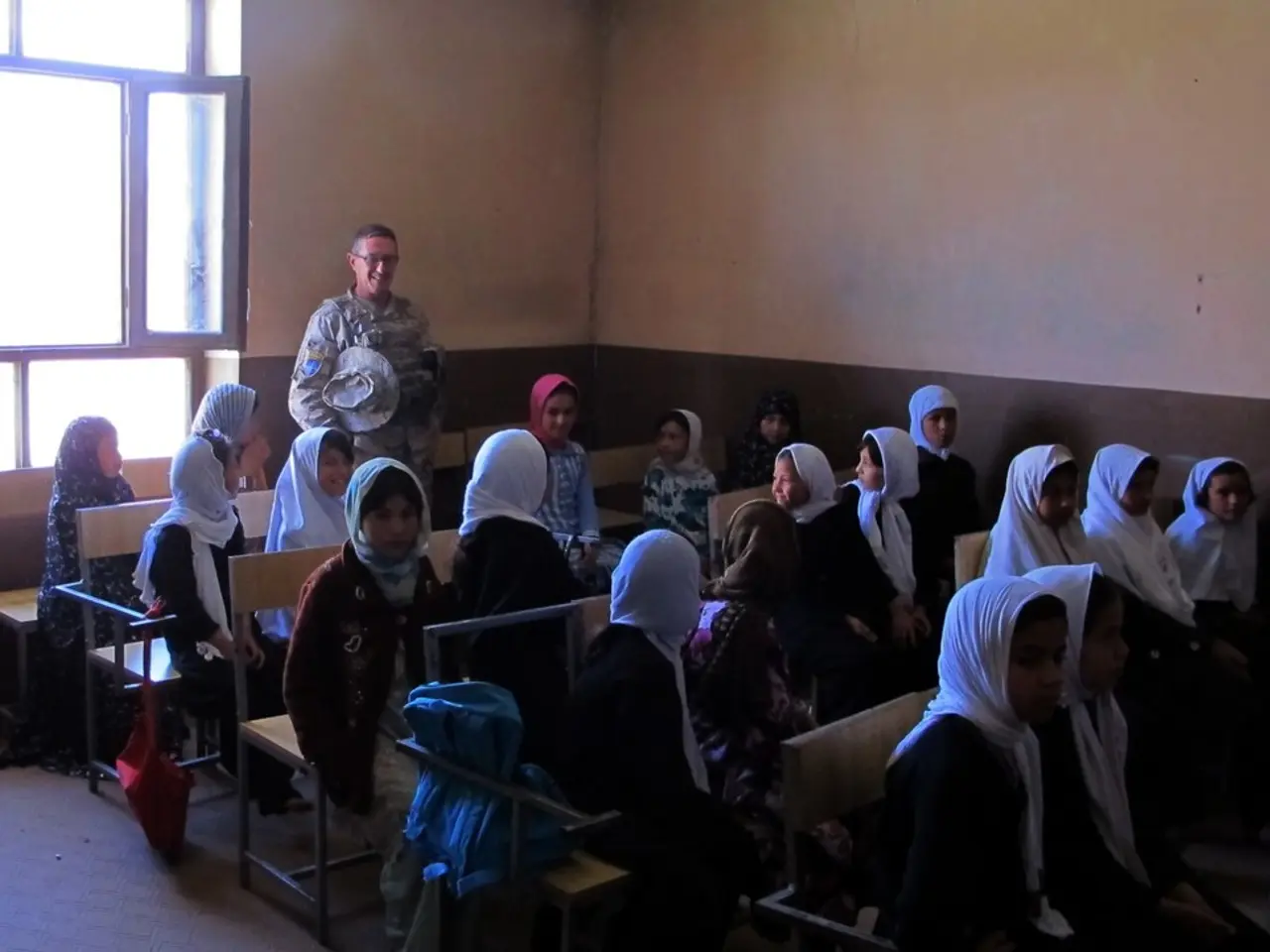Highlighting the Advantages, Hurdles, and Triumphs in Cultivating Multicultural Learning Environments in Education
In a diverse urban neighborhood, the "Global Classroom" initiative is making waves by fostering cross-cultural friendships, building cultural awareness, and promoting global citizenship. This innovative approach to education is just one example of the many multicultural education programs that are transforming the way students learn and grow.
Promoting inclusivity and cultural diversity in education is no longer a luxury, but a necessity for creating a supportive and inclusive learning environment. Here are some strategies demonstrated by successful multicultural education programs:
Strategies for Promoting Inclusivity and Cultural Diversity
- Inclusive Curriculum and Pedagogy: Integrate diverse perspectives into the curriculum by including literature, history, and examples from various cultures and backgrounds. Use teaching methods that cater to different learning styles and abilities.
- Professional Development for Educators: Provide ongoing training for teachers and staff on diversity, equity, and inclusion (DEI). This equips them with the skills to create inclusive classrooms and address bias effectively.
- Student-Centered Learning: Focus on engaging students in culturally relevant learning by promoting collaboration and interaction. This approach helps students take ownership of their education and feel represented in instructional materials.
- Culturally Responsive Teaching: Incorporate students' cultural references into lessons and assessment methods. Use texts and materials that mirror the diversity of the classroom to enhance engagement and sense of belonging.
- Diverse Staff Representation: Ensure that the school staff reflects the diversity of the student body. A diverse teaching and administrative team provides role models for students and brings a variety of perspectives to the school community.
- Student Support Services: Offer support services that address the unique needs of diverse student populations, including counseling, mentorship programs, and resources for students with disabilities.
- Family and Community Engagement: Foster strong partnerships with families and the broader community by involving them in school activities and decision-making processes. This creates a more inclusive environment.
- Anti-Bullying and Anti-Discrimination Policies: Implement and enforce clear policies against bullying and discrimination to create a safe and supportive environment where all students feel protected and valued.
- Embracing an Asset-Based Mindset: Reflect on students’ individual strengths and use their interests, skills, and responsibilities to guide classroom instruction. This approach leverages students' cultural experiences as assets in the classroom.
- Integrating Multicultural Literature: Incorporate multicultural literature into the curriculum to enrich students' understanding and promote empathy towards different cultures.
These strategies not only enhance academic performance but also foster personal growth and social harmony within the educational environment. Success stories of multicultural education programs further emphasize the positive impact of cultural diversity on students and communities.
By embracing and celebrating cultural diversity, we can create educational environments that empower students to thrive in a diverse and interconnected world. Challenges may arise in promoting inclusivity, but strategies such as creating an inclusive classroom environment and incorporating multicultural content can help. The success of multicultural education programs highlights the importance of creating inclusive educational environments that celebrate and respect the unique contributions of every student.
In addition to the "Global Classroom," other initiatives like the "Cultural Exchange Program" in a rural school are also making a difference. This program connects students from different cultural backgrounds through pen-pal exchanges, video conferences, and cultural immersion experiences. These programs not only foster meaningful relationships but also promote cultural understanding, creating a supportive and inclusive learning environment.
In conclusion, the future of education lies in embracing and celebrating diversity. By implementing strategies that promote inclusivity and cultural diversity, we can create a more equitable and supportive learning environment for all students.
Strategies for promoting inclusivity and cultural diversity in education extend beyond the Global Classroom initiative. The "Cultural Exchange Program" in a rural school, for instance, fosters meaningful relationships and promotes cultural understanding through pen-pal exchanges, video conferences, and cultural immersion experiences. These programs not only enrich lifestyles by fostering cross-cultural friendships but also contribute to education-and-self-development by building cultural awareness and global citizenship.




